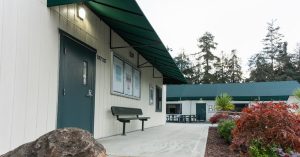June 11’s Santa Clara Unified Board of Trustees meeting featured a balanced budget, a review of the first year’s performance under the state-mandated Local Control Accountability Plan (LCAP), and pay increases for administration staff. At the previous meeting, the Board approved a contract with the classified (non-certificated) employees, effective June 30.
Academic Improvement, But LCAP’s Role Unclear – Other Than Increasing Paper Use
Gov. Jerry Brown may have intended to simplify school funding when he proposed the Local Control Funding Formula, (LCFF) which reduces restricted funding categories, giving districts more discretion in using their resources. But that discretion came with a requirement for a detailed three-year plan on how they intended to meet state-set educational goals – the Local Control Accountability Plan.
While replacing many reports with one may appear to reduce the workload in Sacramento, at the local level it seems to have simply replaced many reports eating up substantial staff time year-round with one mega-report eating up a substantial amount of staff time year round.
The Dept. of Education’s (DOE) plan was conceived with the lofty idea that creating this plan was going to be a joint venture between parents, teachers and administrators – that in itself a measurable goal with seven questions like the following: “What specific actions were taken to meet statutory requirements for stakeholder engagement pursuant to Education Code sections 52062, 52068, and 47606.5, including engagement with representatives of parents and guardians of pupils identified in Education Code section 42238.01?”
Now it’s reporting time for year one of the implementation, and one general observation reported out is that pursuant to sections 52062, 52068, and 47606.5, and 42238.01, “response levels were not as high as we would have preferred.”
Apparently, you’re not going to persuade busy people to give up their time for “critical analysis of each of the twenty goals;” a review of last year’s LCAP that “resulted in the need to critically evaluate the large number of goals within the LCAP, with the intent to reduce the number of goals and to ensure alignment with the developing Strategic Plan,” and observations that, “Based on district wide CHKS School Climate Module administered at secondary level, the need was identified to increase student perception of school and building cleanliness.”
There is evidence of student progress in the last year, regardless of the CHKS School Climate Module results. But it’s not enough improvement to be convincing evidence that the LCAP’s tortuous verbosity fostered it. These educational challenges – English Language Learners (ELLs), and college-readiness of Hispanic students – were already under the microscope. (With as much justification, improvement could be attributed to the departure of meddlesome former Trustee Ina Bendis, freeing teachers and administrators from distracting demands for complicated, time-consuming statistical reports.)
The number of English Language Learners who have reached English fluency with less than five years in U.S. grew to 35 percent from 29 percent, and about 800 ELLs moved out of that category. Referrals for Special Education dropped from 15 percent to 13.3 percent, as a result of tiered interventions. More students are passing the CAHSEE (high school exit exam) except ELLs and students with Individual Education Plans (IEP, special education), who are doing slightly worse on the math exam.
Overall, more graduates are meeting UC/CSU entrance requirements; an increase to 39 percent from 38 percent. This was true for Hispanic, Asian and White ethnic subgroups, but not among Filipinos and African-Americans, where students meeting the requirements declined.
Superintendent Stan Rose noted that the data brings up the perennial question of institutionalized racism – although much of the data isn’t current. “If we just implement the things we’ve talked about, and do it well, every message on this says we will do well,” he said.
Trustee Christopher Stampolis wasn’t going to let go of the subject of institutional racism – a repeated theme for him since his 2012 campaign – noting that “We don’t provide tutoring services for our students [failing] in 9th grade algebra, but we know that’s a brown student cohort … That’s a funding issue,” he said, suggesting that “large expenditures of money” could be made for this, quickly, at the behest of the school board.
“Maybe that is a policy discussion for board: Do we want to fill in that gap for families after school?” (Afterschool care has been a personal problem for Stampolis, leading to a permanent restraining order and board censure after his threatening conduct to a principal over his lateness picking up his child.)
Stampolis’ past suggestions for top-down instructional action by the board include hiring librarians so Peterson Middle School library could stay open after school, converting Bracher K-5 Elementary to a K-8 school between December 2012 and August 2013, and adopting the ZooPhonics reading curriculum.
One new SCUSD program is delivering tangible and significant results after just one year: Santa Clara High School’s own grassroots program to actively encourage students to consider AP classes. Affluent white and Asian students typically dominate AP enrollment. Prior to the SCHS’s program, Hispanic, black and economically disadvantaged students were half as likely to take AP classes, said the school’s principal John Shelby.
SCHS’ program is built on “non-traditional ways of showing that students would be successful,” starting with personal invitations to selected students, asking if they were willing to take an AP class. Then the program provides tutoring and counseling support for students taking their first AP class. The result is that there are 87 percent more of these underrepresented groups in AP classes now, said Shelby.
Stampolis immediately wanted to know “what would it take to offer that type of class over the summer or over the weekend?” A lot of money, Shelby replied.
Trustee Michele Ryan pointed out the obvious flaw in Stampolis’ suggestion. “If that’s a support for the AP class then you need to have that during the time you’re taking that class.”
“The majority of work [is] to help you succeed in the course you’re in,” added Shelby.
SCUSD Budget Blues at Bay for Present
SCUSD will start 2015-2016 with at least $6 million – and possibly $21 million – more than last year. While revenue is growing, however, so are expenses. There would be a $13 million deficit next year, were it not for several factors, explained Asst. Superintendent of Business Services Mark Allgire.
First there is $6 million in unrestricted reserve fund balances (unspent last year). Then there is another $2.1 million reserve in other targeted fund balances. The biggest factor, however, is another RDA dissolution windfall. The district will receive a one-time payment of $8 million, plus $3.5 million on an ongoing basis.
Where’s the money coming from? Santa Clara City services to residents – fee hikes and overcrowded soccer fields, for example. (That means that residents in Santa Clara’s other two districts – Cupertino and Campbell – get to pay the bill, without enjoying the benefits. Conversely, San Jose and Sunnyvale district residents get the benefits without the bill.)
The recurring $3.5 million is coming from $14 million in lease revenue that the City Of Santa Clara has lost from $300+ million worth of Santa Clara redevelopment agency (RDA) property “clawed back” by the County (including the Northside Library, which the County hasn’t given up its claim on).
The one-time $8 million is coming from the escrow account the city has been paying the leases into since 2012. The County is now distributing the money based on a 2014 court ruling, upheld in April, denying the City’s claims that because the properties were bought 30-50 years ago and paid for from the City’s general fund, they shouldn’t be subject to the County’s acquisitive “clawback.”
There’s no windfall coming in from San Jose’s former RDA – and three of the new schools that the district needs are in the North San Jose part of the district. That’s because all of the incremental tax revenue from North San Jose’s redevelopment projects must go to pay debt service on $2.4 billion in bonds that won’t be paid off, according to the Santa Clara County Finance Agency, until around 2036. Right now, San Jose’s former RDA doesn’t have enough revenue to cover debt payments coming due this month. That means less money for county taxing agencies.
(One factor driving San Jose’s unbridled Northside development was that, as a redevelopment area, the city could divert all the incremental property tax into its RDA to pay off the development bonds, leaving SCUSD with the problem of getting super-majority votes for school construction bonds).
“I hope that we look at the windfall as an opportunity to spend money on those things that we haven’t spent money on in the past,” said Stampolis, returning to his free-spending theme.










0 comments